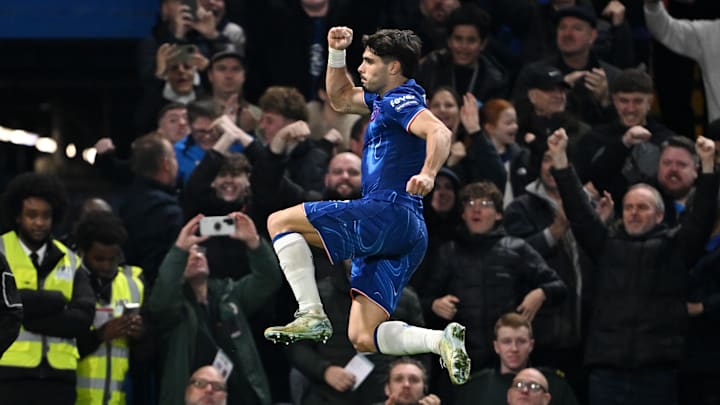Midfield Dynamics and Positional Battles
As Arsenal’s defensive midfielders were drawn wide by Chelsea’s attacking midfielders, forward Nicolas Jackson frequently dropped into the pocket to receive possession. While the home team did manage to find Jackson in these spaces, they struggled to turn these opportunities into threats on goal, with Arsenal’s center-backs staying close to limit his influence.
Additionally, when the Arsenal DMs looked to step up and mark the Chelsea DMs, Palmer and Gusto would be free between the lines to receive possession, as we see here.
— Fahd (@fahdahmed987) November 10, 2024
This positioning by the Arsenal DMs + a passive frontline press allows Chelsea to executive those piercing… pic.twitter.com/W0r9NJIena
On occasions when Arsenal’s defensive midfielders pushed up to press Caicedo and Lavia, Chelsea players like Cole Palmer and Malo Gusto found space between the lines. This setup allowed Chelsea to break lines with piercing passes, though they could not fully capitalize, as many attempts were either blocked or easily saved by Arsenal goalkeeper David Raya.
Arsenal’s Defensive Discipline
As Chelsea progressed up the field, Arsenal retreated into a deep 4-4-2 formation with disciplined defensive support from their wingers. Arsenal are generally adept at low-block defending, springing forward to challenge when Chelsea played sideways or backward passes. This positional fluidity kept Chelsea’s midfield from establishing sustained control.
The first significant adjustment came from Mikel Arteta around the 10th minute, refining Arsenal’s high press. Instead of both forwards advancing on Chelsea’s defenders, one of them pressed while the other stayed with one of Chelsea’s pivots. This change allowed Arsenal’s wingers to press Chelsea’s wide center-backs, while Arsenal’s defensive midfielders pushed up to mark Chelsea’s central midfielders.
In all fairness to Colwill, he spots this opportunity moments later. He tries to make the most out of it by launching a beautiful switch of play to Madueke, who, with Gusto, has the 2v1 on Timer that I spoke about just now.
— Fahd (@fahdahmed987) November 10, 2024
The play ends with Madueke having a shot on goal.… pic.twitter.com/yjyAj2SWD5
Chelsea maintained their 3-2-5 in-possession shape, with Jackson often drifting to the right during counterattacks. Head Coach Enzo Maresca’s choice to deploy Lavia and Caicedo as a defensive midfield pairing, with a fullback in the half-space for added protection, provided Chelsea some stability, even though their execution in the final third remained inconsistent.
